Ionotropic Receptors (Ligand-Gated Channels)
Objective 11
Recognize ligand-gated ion channels (ionotropic receptors).
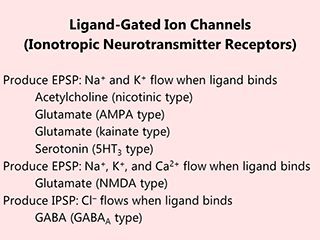 Ligand-gated ion channels, when they are found at synapses, are called ionotropic receptors. The name “ionotropic” comes from slamming together scientific English (an ion, a charged chemical such as Na+) and ancient Greek (τρόπος, trópos, “turn, direction, way”).
Ligand-gated ion channels, when they are found at synapses, are called ionotropic receptors. The name “ionotropic” comes from slamming together scientific English (an ion, a charged chemical such as Na+) and ancient Greek (τρόπος, trópos, “turn, direction, way”).
This table lists the ionotropic receptors. Yes, this is all of them. There are hundreds of neurotransmitters, but only a few are capable of activating ionotropic receptors, and then it’s only a subset of the receptors activated by that particular neurotransmitter. For example, acetylcholine can act at the ionotropic nicotinic acetylcholine receptor or at the metabotropic (Objective 12) muscarinic acetylcholine receptor.
Why are these receptors called “nicotinic” or “muscarinic”? Because those are the first drugs we discovered that acted as receptor agonists. An agonist is a drug that mimics the action of the signaling molecule, in this case by binding a receptor and opening an ion channel. It is rare for a drug to do a better job of this than the naturally occurring neurotransmitter, but that’s the case with both nicotine and muscarine.
 Most people have heard of nicotine as the active ingredient in cigarettes or vape juice. The effects of nicotine on the nicotinic acetylcholine receptor are the reason people like smoking or vaping, and why they believe they can use these pens to quit smoking cigarettes. There are health effects from both vaping and smoking, but they occur over a period of months or years and in the meantime people derive a lot of pleasure from activating their nicotinic acetylcholine receptors.
Most people have heard of nicotine as the active ingredient in cigarettes or vape juice. The effects of nicotine on the nicotinic acetylcholine receptor are the reason people like smoking or vaping, and why they believe they can use these pens to quit smoking cigarettes. There are health effects from both vaping and smoking, but they occur over a period of months or years and in the meantime people derive a lot of pleasure from activating their nicotinic acetylcholine receptors.
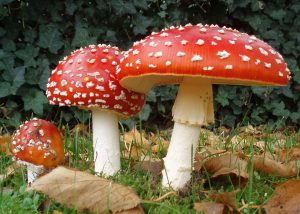
On the other hand, no one derives pleasure from eating the deadly fly agaric, Amanita muscaria. That’s because muscarine, which is isolated from this poisonous mushroom, is an agonist (activator) of muscarinic acetylcholine receptors. Recall from Unit 12 that those receptors are found at the neuromuscular junction between postganglionic parasympathetic neurons and smooth muscle cells. You may remember when we said it was a Very Bad Thing to activate the parasympathetic nervous system all at once, yet that’s exactly what Amanita mushrooms do.
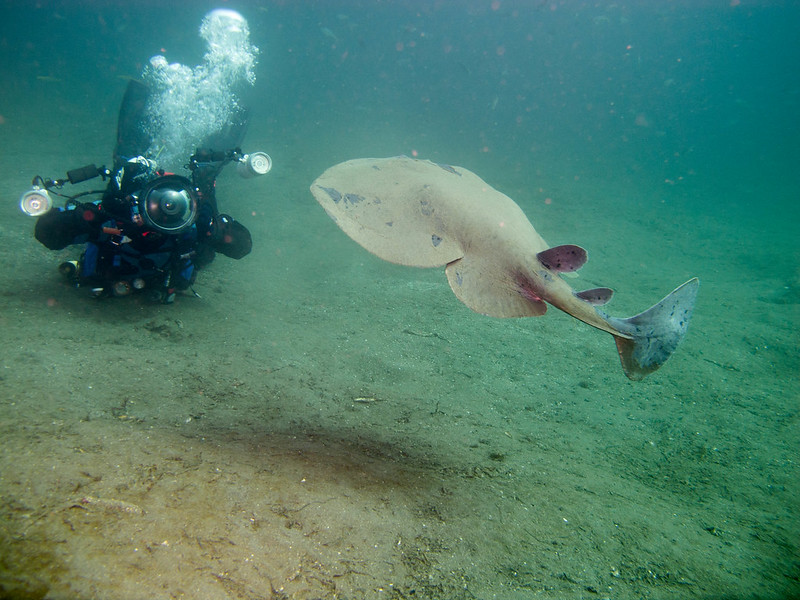 Back to the well-studied nicotinic acetylcholine receptor. It turns out that the electric ray Torpedo shocks the crap out of its prey by developing a huge current. A ligand-gated channel allows electrically charged ions to flow; a flow of charges is an electric current. Each single nicotinic acetylcholine receptor protein channel develops a current of 2 pA (2 x 10–12 A). The Torpedo electroplax can develop a current of 30 A (equivalent to a hair dryer dropped into your bathtub) which takes 15,000,000,000,000 (1.5 x 1013) nicotinic ACh receptors! If a scientist wants to study nicotinic ACh receptors, there’s a lot of them to study which makes experiments easier.
Back to the well-studied nicotinic acetylcholine receptor. It turns out that the electric ray Torpedo shocks the crap out of its prey by developing a huge current. A ligand-gated channel allows electrically charged ions to flow; a flow of charges is an electric current. Each single nicotinic acetylcholine receptor protein channel develops a current of 2 pA (2 x 10–12 A). The Torpedo electroplax can develop a current of 30 A (equivalent to a hair dryer dropped into your bathtub) which takes 15,000,000,000,000 (1.5 x 1013) nicotinic ACh receptors! If a scientist wants to study nicotinic ACh receptors, there’s a lot of them to study which makes experiments easier.
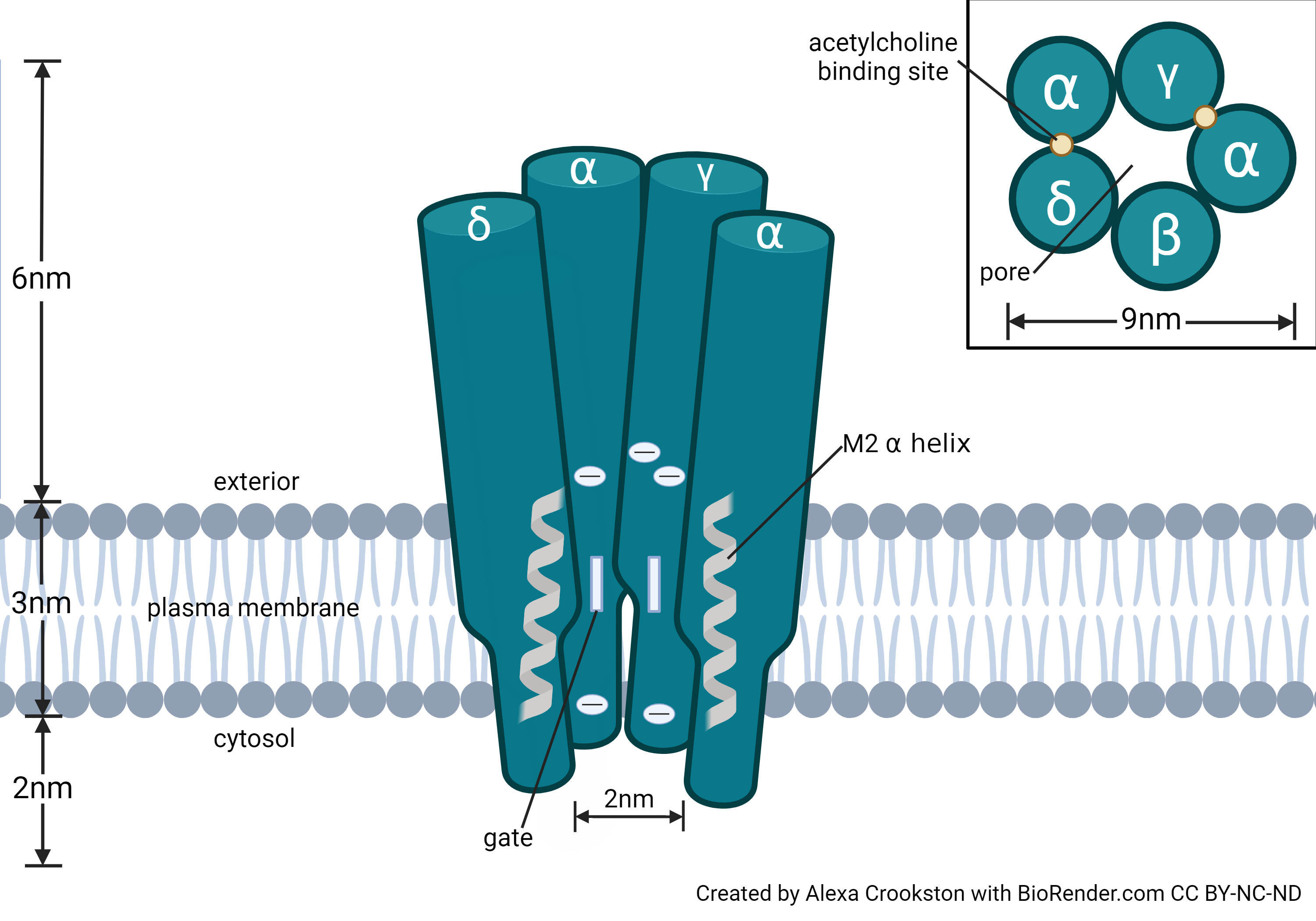
The nicotinic acetylcholine receptor (illustrated here) allows Na+ and K+ to flow (some types have a ligand-gated channel that also allows Ca2+ to flow as well). Na+ and Ca2+ flow in; K+ flows out. The net effect is about halfway between the equilibrium potential for sodium and potassium. If the nicotinic acetylcholine receptor “door” is left open, the membrane voltage will settle close to halfway between EK and ENa, or around 0 mV.
The nicotinic ACh receptor is blocked by a wide variety of drugs (you don’t need to know any of these). Drugs which bind to receptors and block the action of the neurotransmitter or other signaling molecule are called antagonists.
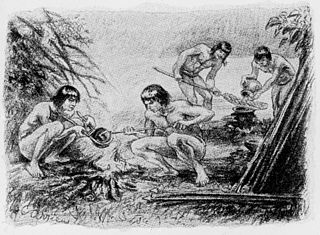
The Ticunas and the Macusi of the Amazon basin use a plant-based compound called “woorari“, or the Anglicized “curare” on an arrow tip to paralyze their prey. The active ingredient, D-tubocurarine, works by blocking the signal between motor neurons and muscle that is carried by acetylcholine.
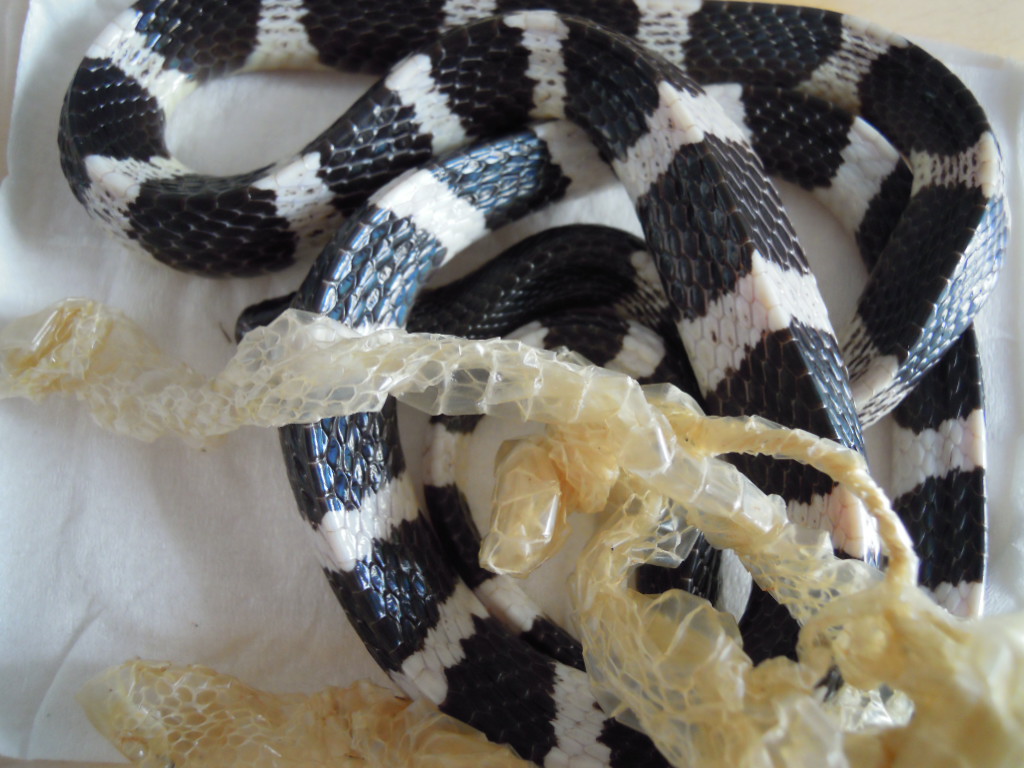
Snakes like the banded krait (Bungarus multicinctus) use α-bungarotoxin to achieve the same purpose in prey they envenomate with their fangs. Scientists use these drugs in the lab to block the action of nicotinic ACh receptors.
Media Attributions
- U13-090 Ionotropic Receptor Table © Hutchins, Jim is licensed under a CC BY-SA (Attribution ShareAlike) license
- U13-090a E-Cigarette Broken Cigarette © TBEC Review is licensed under a CC BY (Attribution) license
- U13-091 Amanita Muscaria © Onderwijsgek is licensed under a CC BY-SA (Attribution ShareAlike) license
- U13-091a Torpedo Californica © Bierman, Ed is licensed under a CC BY (Attribution) license
- U13-092 Nicotinic Acetylcholine Receptor © Crookston, Alexa is licensed under a CC BY-NC-ND (Attribution NonCommercial NoDerivatives) license
- U13-093a South American Indians Preparing an Arrow Poison © Wellcome Collection is licensed under a CC BY (Attribution) license
- U13-093 Many Banded Krait © FearingPredators is licensed under a CC BY-SA (Attribution ShareAlike) license

